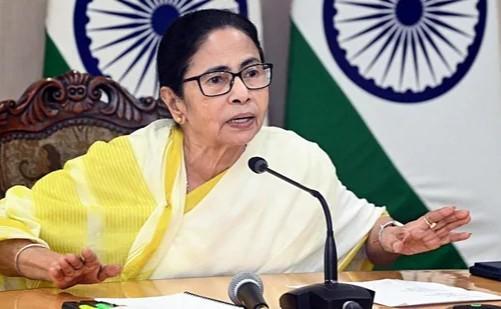
Assam CM helped Nitish work out ₹10,000 for women scheme: Report
In a recent development, it has been reported that the Assam Chief Minister, Himanta Biswa Sarma, played a significant role in helping the Bihar government, led by Nitish Kumar, to formulate a scheme to provide ₹10,000 to women. According to NDA leaders, a large part of the credit for Bihar’s scheme to give ₹10,000 to women goes to Assam CM Himanta Biswa Sarma. This revelation has highlighted the collaborative efforts between the two state governments and the exchange of ideas that can lead to the development of innovative schemes.
As per reports, Sarma sent his bureaucrats to Bihar around five months ago, following a request from the Nitish Kumar government. The bureaucrats made a presentation before officials on the ‘Jeevika ₹10,000 model’, which was later incorporated into the all-new Mukhyamantri Mahila Rojgar Yojana. This scheme aims to provide financial assistance to women in the state, enabling them to start their own businesses or pursue other economic activities.
The Mukhyamantri Mahila Rojgar Yojana is a significant initiative by the Bihar government, aimed at empowering women and promoting their economic independence. The scheme is expected to benefit a large number of women in the state, providing them with the necessary financial support to pursue their entrepreneurial dreams. The fact that the Assam CM played a crucial role in shaping this scheme is a testament to the cooperation and exchange of ideas between the two state governments.
The ‘Jeevika ₹10,000 model’ presented by the Assam bureaucrats is reportedly based on a similar scheme implemented in Assam. The model has been successful in promoting women’s economic empowerment in the state, and its incorporation into the Mukhyamantri Mahila Rojgar Yojana is expected to yield similar results in Bihar. The scheme is a significant step towards promoting women’s economic independence and self-reliance, and its success can have a positive impact on the overall development of the state.
The collaboration between the Assam and Bihar governments on this scheme is a positive example of how state governments can work together to develop innovative solutions to common problems. The exchange of ideas and expertise between the two governments has led to the development of a scheme that has the potential to benefit a large number of women in Bihar. This collaborative approach can be replicated in other areas, leading to the development of more effective and efficient solutions to the challenges faced by the states.
The role of the Assam CM in helping the Bihar government to formulate the scheme is also significant. Himanta Biswa Sarma’s initiative in sending his bureaucrats to Bihar to share their expertise and experience demonstrates his commitment to promoting women’s economic empowerment and development. The fact that the Bihar government sought the assistance of the Assam government in developing the scheme is a testament to the respect and admiration that Sarma’s government has earned for its innovative approaches to development.
In conclusion, the report that the Assam CM helped Nitish work out the ₹10,000 for women scheme is a significant development that highlights the collaborative efforts between the two state governments. The scheme has the potential to benefit a large number of women in Bihar, promoting their economic independence and self-reliance. The exchange of ideas and expertise between the Assam and Bihar governments is a positive example of how state governments can work together to develop innovative solutions to common problems. As the scheme is implemented and its impact is assessed, it is likely to serve as a model for other state governments to follow, promoting women’s economic empowerment and development across the country.
The success of the Mukhyamantri Mahila Rojgar Yojana will depend on various factors, including its implementation, funding, and the support provided to the beneficiaries. However, the fact that the scheme has been developed in collaboration with the Assam government, which has experience in implementing similar schemes, is a positive sign. The Assam government’s ‘Jeevika ₹10,000 model’ has been successful in promoting women’s economic empowerment in the state, and its incorporation into the Mukhyamantri Mahila Rojgar Yojana is expected to yield similar results in Bihar.
As the scheme is rolled out and its impact is assessed, it is likely to face various challenges, including those related to funding, implementation, and support. However, the collaborative approach adopted by the Assam and Bihar governments is a positive sign, and it is likely to help in addressing these challenges. The exchange of ideas and expertise between the two governments will continue to play a crucial role in the success of the scheme, and it is likely to serve as a model for other state governments to follow.
In the coming months and years, it will be interesting to see how the Mukhyamantri Mahila Rojgar Yojana is implemented and its impact on the women of Bihar. The scheme has the potential to make a significant difference in the lives of thousands of women, promoting their economic independence and self-reliance. The collaborative approach adopted by the Assam and Bihar governments is a positive example of how state governments can work together to develop innovative solutions to common problems, and it is likely to be replicated in other areas, leading to the development of more effective and efficient solutions to the challenges faced by the states.
News Source: https://indianexpress.com/article/political-pulse/assam-cm-sarma-nitish-kumar-govt-rs-10000-scheme-10375526/lite/




